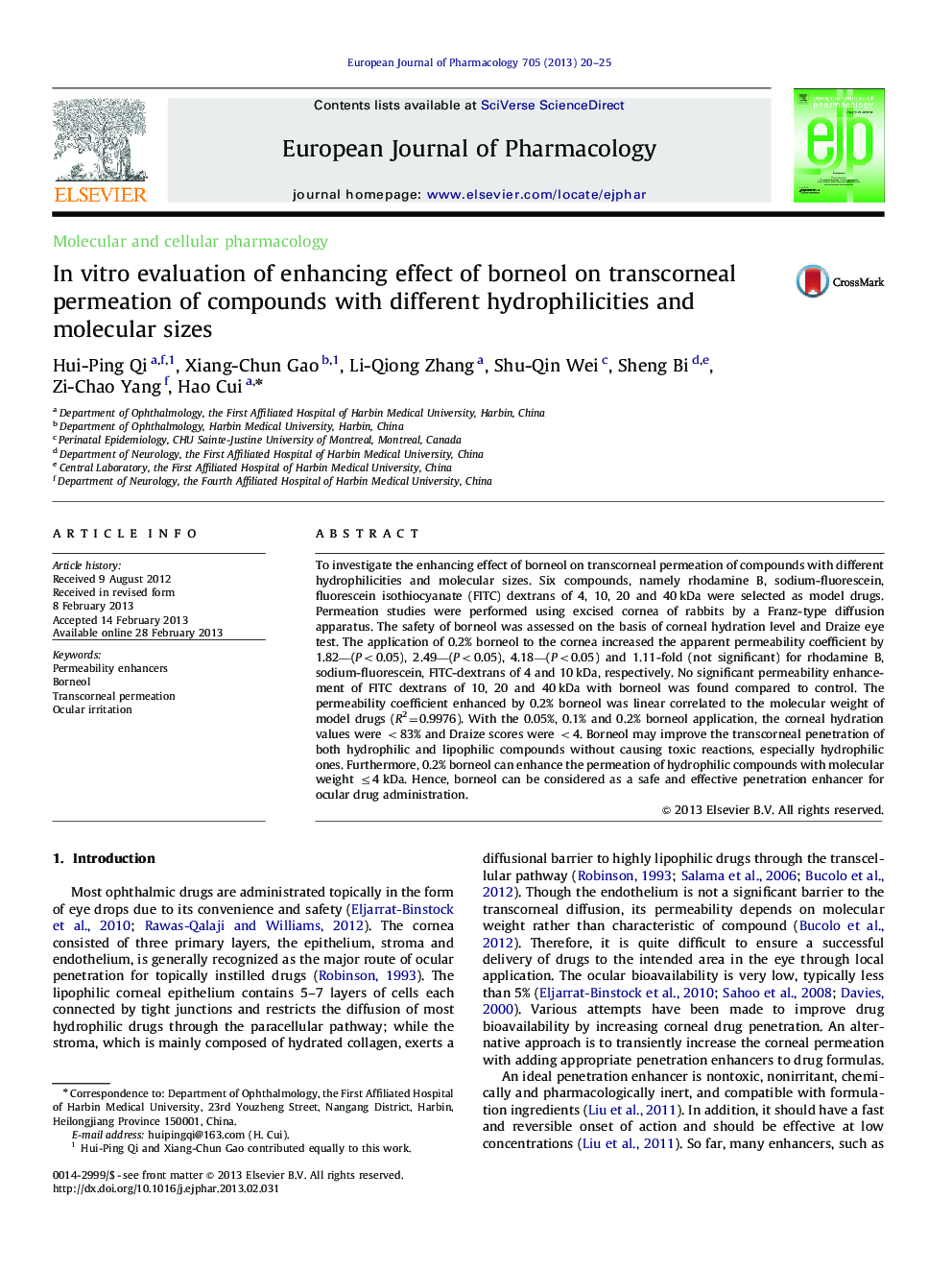| Article ID | Journal | Published Year | Pages | File Type |
|---|---|---|---|---|
| 2532216 | European Journal of Pharmacology | 2013 | 6 Pages |
To investigate the enhancing effect of borneol on transcorneal permeation of compounds with different hydrophilicities and molecular sizes. Six compounds, namely rhodamine B, sodium-fluorescein, fluorescein isothiocyanate (FITC) dextrans of 4, 10, 20 and 40 kDa were selected as model drugs. Permeation studies were performed using excised cornea of rabbits by a Franz-type diffusion apparatus. The safety of borneol was assessed on the basis of corneal hydration level and Draize eye test. The application of 0.2% borneol to the cornea increased the apparent permeability coefficient by 1.82—(P<0.05), 2.49—(P<0.05), 4.18—(P<0.05) and 1.11-fold (not significant) for rhodamine B, sodium-fluorescein, FITC-dextrans of 4 and 10 kDa, respectively. No significant permeability enhancement of FITC dextrans of 10, 20 and 40 kDa with borneol was found compared to control. The permeability coefficient enhanced by 0.2% borneol was linear correlated to the molecular weight of model drugs (R2=0.9976). With the 0.05%, 0.1% and 0.2% borneol application, the corneal hydration values were <83% and Draize scores were <4. Borneol may improve the transcorneal penetration of both hydrophilic and lipophilic compounds without causing toxic reactions, especially hydrophilic ones. Furthermore, 0.2% borneol can enhance the permeation of hydrophilic compounds with molecular weight ≤4 kDa. Hence, borneol can be considered as a safe and effective penetration enhancer for ocular drug administration.
